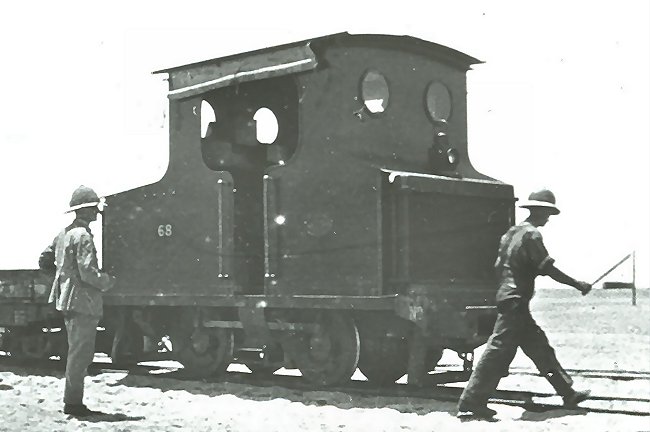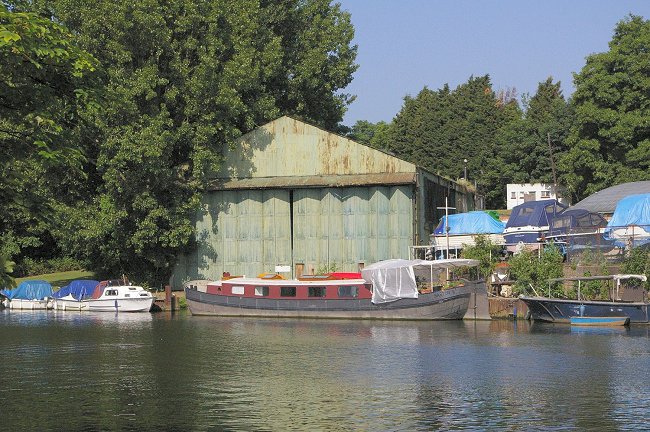|
Latest Photos Part
6 Part 5 Part 4 (this page)
Part 3 Part 2
Part 1

Mystery Photograph - AP
This highly unusual railway vehicle ran on the Brighton &
Rottingdean Railway, some of the remains of which can still be seen at low
tide. The passenger compartment was on stilts so that the railway could be
used at high tide when the tracks were covered in water. It is thought to
have been built by the Gloucester Carriage & Wagon Company.
Feedback on Mystery Photograph - AP (1)
I believe that this is Volk's "Daddy Long Legs" in Brighton.
Feedback on Mystery Photograph - AP (2)
Yes it appears in a book about the history of the Gloucester
Carriage & Wagon Co. It must have been assembled for despatch to
Brighton and then re-assembled on the sea shore.

Mystery Photograph - AO
A passenger coach body in a field in East Anglia on 21st June 1994. It
was photographed at an unknown location whilst journeying between Fleet
Hargate in Lincolnshire and Peterborough in Cambridgeshire.
The design of the coach is distinctive, so it may be possible to identify
which railway it originally belonged to. It has a central guard's
compartment and four passenger compartments. Judging by its length it
would have been carried on either 6-wheels or two bogies. Can anyone
identify the vehicle or the location?
Feedback on Mystery Photograph - AO
I think this may be a GER six wheel Luggage Composite or perhaps a
Luggage First built in the 1880s. Not a brake but these were once a
very common type of coach with a central luggage compartment.

Mystery Photograph - AN
A 1ft 6in gauge Clayton [now thought instead to be a Wingrove &
Rogers - see feedback below] battery-electric locomotive, without its
battery box. It is seen awaiting unloading at a private location in North
Cheam in Surrey on 16th December 1995, having previously been at a scrap
yard in the Ellesmere Port area. Prior to that it is thought to have
worked for a civil engineering contractor in Lancashire. Can anyone supply
the loco details, identify the scrap yard, or provide details of previous
owners?
Feedback on Mystery Photograph - AN
A BEV / Wingrove and Rogers product. Clayton Equipment 18" gauge locos had both axles driven from a centrally mounted traction motor, so there would be no need for coupling rods, whereas BEV / W&R Class W217 locos had only one axle driven, and therefore needed coupling rods.

Mystery Photograph - AM
A track machine carrying Balfour Beatty markings is seen running
through Datchet station during an engineering possession on 29th November
2008. Can anyone identify its purpose?
Feedback on Mystery Photograph - AM
This appears to be PC040, a Permaquip Permaclipper, it removes and
replaces Pandrol track clips. The Mk3 version was built around 1984
powered by a two cylinder Lister diesel engine driving hydraulic
motors.

Mystery Photograph - AL
A Princess Christian hospital coach. Details are sought of the builder,
the vehicle and its operation.
Feedback on Mystery Photograph - AL
The Princess Christian Hospital Train was formed of ten coaches built
by the Birmingham Railway Carriage & Wagon Company, to which the War
Office added a further two vehicles to make it a twelve coach train. It
was officially designated as First World War ambulance train AT15.
Each carriage was 55ft 0in long, 8ft 9in wide and 58ft 6in over buffers.
Each carriage weighed 29 tons. They were painted French grey with
mouldings picked out in brown and vermillion lines.
Princess Christian was Helena, daughter of Queen Victoria. She sponsored
this train, and had previously sponsored a 3ft 6in hospital train for use
during the South African War.

Mystery Photograph - AK
Three diesel locomotives in the depot of CTTG (Channel Tunnel
Trackwork Group) at Cheriton near Folkestone on 11th April 1992. The
centre machine is a former BR class 20 diesel-electric locomotive built by English
Electric. The other two are former West German State railways (Deutsche
Bundesbahn) centre cab diesel-hydraulic-locos. The yellow wagons are thought to have been
from Germany and the bogie brake van at the bottom right of the picture is
from the Southern Region of BR.
Does anyone have a full list of standard gauge locomotives that were used
by CTTG?

Mystery Photograph - AJ
A steam locomotive tender carrying Southern railway markings. It has
been modified to have buffers at both ends and the centre set of wheels
has been removed.
Feedback on Mystery Photograph - AJ
It is of LSWR Beattie design.

Mystery Photograph - AI
This wonderfully odd-looking steam locomotive was named "Rocket of
China" and ran on the Kaiping Railway. Details are sought of its
builder and of the Kaiping Railway.
Feedback on Mystery Photograph - AI
The locomotive was a standard gauge 2-4-0T and was home-made using the
boiler of a portable steam engine from the Kaiping Colliery Company that
had been built in England. The cylinders were from a winding engine and
were 8in x 15.5in. The driving wheels were 30in diameter, were of American
chilled iron and had been purchased as scrap metal. The locomotive's frame
was made of material recovered from the head gear of the colliery' s No.1
shaft. The locomotive used Stephenson's link motion. It entered service on
9th June 1881.
The Kaiping Colliery Tramway was constructed at Tongshan in Hebei province
and was the first standard gauge railway in China. It later became the
Kaiping Railway.
Feedback on Mystery Photograph - AI (2)
It was preserved but disappeared during the Japanese invasion of China. A
replica has been built.

Mystery Photograph - AH
A narrow gauge 0-4-0 internal combustion locomotive in War Department
service. It is roughly similar in design to locomotives built for military
service by Manning Wardle of Leeds.
Feedback on Mystery Photograph - AH
This First World War view was taken on the 2ft 6ins gauge Port Said (east
to) Mahembiya military line built by the British in 1916 as part of the
Suez Canal defences. There were 23 of these 0-4-0P 55hp locos built by
Hawthorn Leslie B/No. 3107-29 in 1915 as part of the RE "siege
packs" and were ROD Nos. 61-83. All of these worked on various 2ft
6ins gauge lines in the Middle East in Egypt / Sinai / Palestine. The Port
Said line was exclusively worked by petrol locos, including some by
Avonside.

Mystery Photograph - AG
Can someone please identify what type of road / rail machine this is?
Feedback on Mystery Photograph - AG
Mercedes-Benz Unimog U1100 Crew Cab Pick-Up with Crane.

Mystery Photograph - AF
This somewhat tatty old wagon was at British Steel's Shelton Ironworks
on 5th June 1994. It seems to be a unique design. Does anyone know what it
is?
It is virtually identical to the "Parrot"
flat wagons built for the War Department during the First World War, but
appears slightly shorter and wider (the girders for carrying the load are
a modern addition). The bogies are of standard War Department type
from the First World War.
One idea is that it might have been built by the British for use by their
Russian allies, where the width of the wagon would not be a problem, and
that it was not sent due to Russia withdrawing from the war following the
revolution. The width of
the wagon would have prevented it being run on any main line in Britain,
and only a few industrial railways would have been able to accommodate it.

Mystery Photograph - AE
This non-railway photograph shows a building that is understood to be a
typical British seaplane shed from the First World War. It is located on
Platts Eyot in the River Thames and was photographed on 4th June 2010. The
barge obscuring the slipway is the "Barton B".
Feedback on Mystery Photograph - AE
This was the Thorneycroft Motor Patrol Boat and Motor Torpedo Boat works during both world wars.
Latest Photos Part
6 Part 5
Part 4 (this page) Part 3
Part 2 Part 1
|